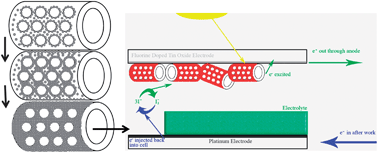Diatoms are photosynthetic microorganisms, found in marine and fresh water environments, which possess a porous silica exoskeleton called a frustule. Scientists in Australia and Canada coated the frustule with titanium dioxide nanoparticles – well known for their light harvesting properties – and incorporated the resulting material into dye sensitised solar cells (DSSCs). The DSSCs containing the frustules showed an efficiency increase of 30% compared to the titania coating alone, which the authors attribute to enhanced light scattering and trapping. The synthetic procedure is also inexpensive and simple.
Read the full details of this exciting Nanoscale communication today:
Diatom frustules as light traps enhance DSSC efficiency
Jeremiah Toster, K. Swaminathan Iyer, Wanchun Xiang, Federico Rosei, Leone Spiccia and Colin L. Raston
DOI: 10.1039/C2NR32716C











